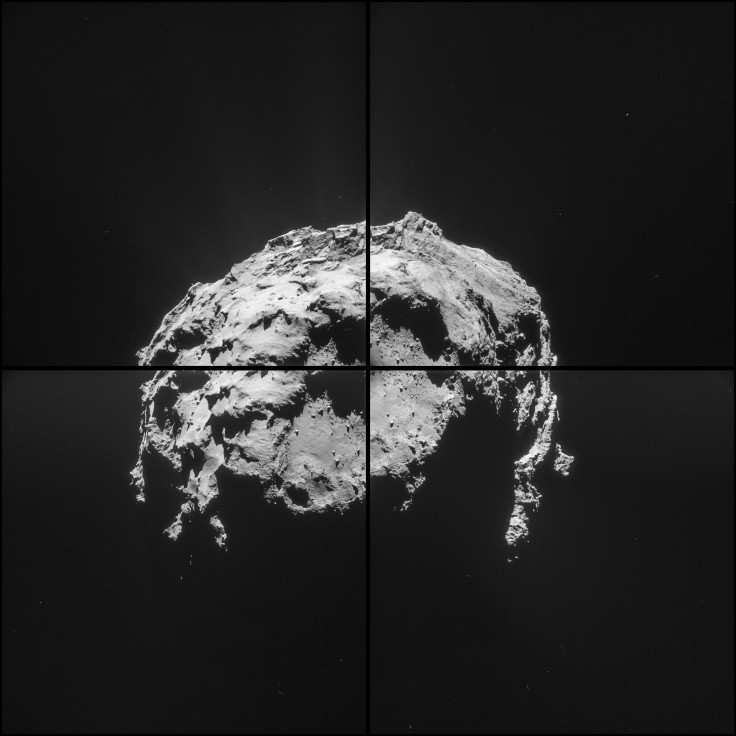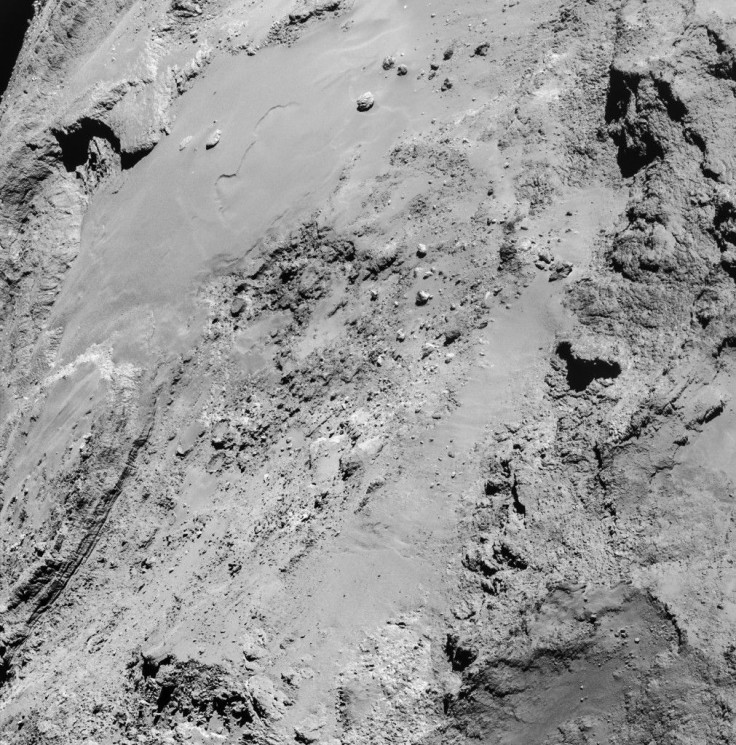Rosetta Spacecraft Begins Series Of Flybys To Start 2015 To Map Comet 67P, Assess Philae Reactivation

The European Space Agency's Rosetta spacecraft has been busy mapping comet 67P/Churyumov-Gerasimenko, and it will perform a series of flybys to start 2015. While many people were celebrating being in love on Valentine's Day, Rosetta was just 6 kilometers (3.7 miles) from comet 67P and delivered detailed images of surface features on the comet's large and small lobes.
During 2015, Rosetta's mission will change just slightly. Instead of orbiting comet 67P, as it had been doing since the summer rendezvous, Rosetta will be performing close flybys to map the comet. The flybys provide detailed images of the comet's surface while Rosetta's onboard instruments sample comet 67P's atmosphere.

In many ways, ESA's Rosetta team on Earth is settling into what would be considered a normal workflow. Unlike 2014's series of milestone events -- waking up Rosetta in January, comet rendezvous in the summer and the Philae landing in November -- 2015 will feature weekly planning sessions based on daily images collected by Rosetta's Navcam. The images help the flight dynamics team establish a trajectory for the spacecraft.

Saturday's close approach focused on the Imhotep region located on the comet's large lobe. In one image taken from 8.9 km (5.5 miles) from the comet's surface, some notable features include the uneven terrain, boulders and a crack that runs along the lower left of the comet.
Rosetta has mapped around 70 percent of comet 67P and will continue to see new areas of the comet throughout 2015. As comet 67P gets closer to the sun it will increase in activity and Rosetta will be right there to observe the event. The next milestone will take place on Aug. 15, when comet 67P makes its closest pass around the sun, known as the perihelion passage. The Rosetta flybys will also assess Philae's condition. The location of the lander remains a mystery, but Philae could wake up when it gets closer to the sun and receives enough energy to exit hibernation.
© Copyright IBTimes 2025. All rights reserved.






















